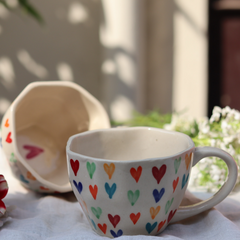Table settings encompass the arrangement of tableware, utensils, and other items on a dining table before a meal. It plays a crucial role in both practical, functional, and social etiquette. Practically, a well-set table ensures that guests have everything they need within reach and understand which utensils to use for each course, facilitating the flow of the meal. It also contributes to the overall aesthetic appeal of the dining area, enhancing the ambiance and setting the tone for the dining experience.
Furthermore, table setting reflects social etiquette and cultural norms. Proper table setting demonstrates respect for guests and the meal being served, showcasing good manners and hospitality. It varies based on cultural traditions and social customs, highlighting the importance of understanding and adhering to these practices to enhance social harmony during communal meals.
Minimalist Table Setting Tips for a Modern Look
Basic Table Settings:- Basic table settings aim to create an organized and aesthetically pleasing dining experience. By arranging plates, utensils, napkins, and glassware in a systematic manner, hosts can enhance the dining atmosphere and facilitate a smooth meal for guests. While specific arrangements may vary based on cultural norms and personal preferences, attention to detail any symmetry contribute to a welcoming table setting. 
Formal Table Settings:- Formal table settings elevate dining occasions by creating a refined and memorable atmosphere that emphasizes etiquette, aesthetics, and cultural significance. Whether for a wedding, formal dinner party, or celebratory event, a well-executed formal table setting sets the stage for an exceptional dining experience that is both visually stunning and socially gracious. 
Buffet Table Settings:- Buffet table settings are designed to accomodate self-service dining experiences efficiently and elegantly. Key considerations include creating a logical flow for guests to access food and ensuring the preasentation is visually appealing. Arrange dishes in a logical order, starting with appetizers and salads, followed by main courses, side dishes, and desserts. Use tiered stands, chafing dishes, and serving utensils to make the food easily accessible and visually appealing. 
Outdoor Table Setting:- Outdoor table settings are designed to make dining enjoyable and comfortable for guests while taking advantage of the natural sorroundings. Opt for lightweight and shatterproof dishes, glasses, and utensils suitable for outdoor use. Choose tablecloths, placemats, and centerpieces that complement the outdoor setting and add to the ambiance. 
Holiday Table Setting:- Holiday table settings play a crucial role in setting the tone for festive gatherings and creating memorable dining experiences. Select special dinnerware, glassware, and utensils that complement the holiday theme. Consider using decorative items to add a personal touch to the table setting. 
In conclusion, the table setting is more than just arranging tableware; it is an integral aspect of dining etiquette and hospitality. By combining practical functionality with aesthetic appeal and cultural significance, table setting enhances the overall dining experience and fosters a sense of warmth and connection among diners.
Each type of table setting is tailored to suit the occasion, setting, and level of formality, ensuring that guests feel comfortable and appropriately accommodated during meals and gatherings.


